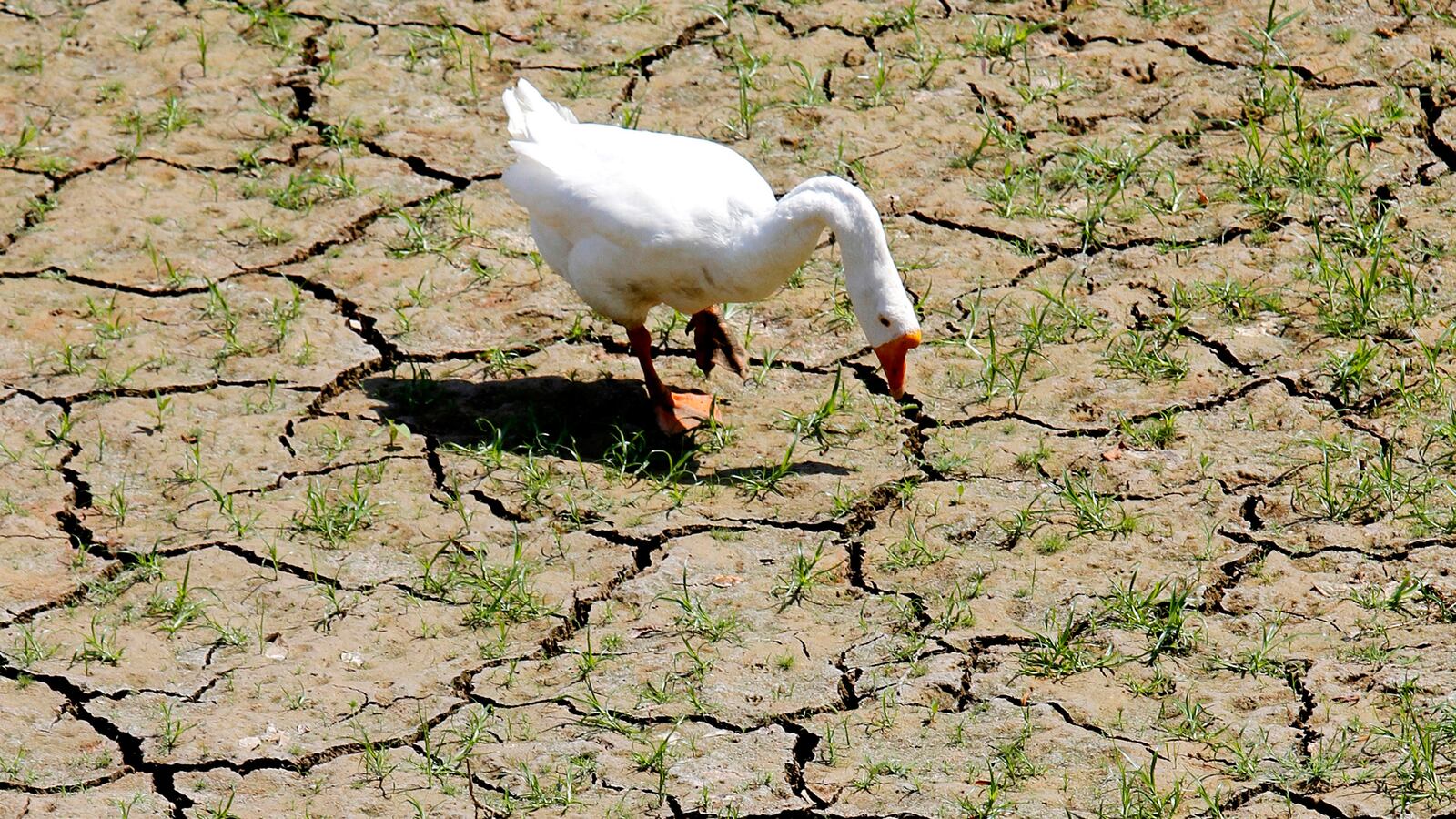Three years ago, as Texas grappled with its driest year on record, Governor Rick Perry declared a weekend of prayer for rain.
Maybe God answered his prayer by sending the drought to California.

The Golden State got slammed by record-low rainfall in 2013 and remains frighteningly dry despite a few recent storms. Snowpack in the Sierra Nevada, the state’s great mountain reservoir, stands at just 31 percent of normal.
Having moved from Texas to California last summer, I’ve watched up close as the nation’s two most populous states have struggled with drought. It’s not pretty. Both are major agricultural states that do remarkably little to regulate groundwater. Both have published lists of towns that could run out of water, sending shockwaves through those communities. Both experienced massive wildfires during their driest-ever year. Most worrying of all, Texas’s water supply still hasn’t recovered from the beating it took in 2011. California, similarly, will take a long time to emerge from this terrible dry spell. Even now, after every rain, the headlines scream “not enough.”
Severe drought follows a certain unpleasant trajectory, whether it’s in Texas, California or any other state. First come the tales of woe from farmers and fish-lovers. Then cities start worrying about water. Voluntary lawn-watering restrictions get imposed, and when those don’t work—because trust me, they don’t—mandatory measures kick in. (Interestingly, Texas’s restrictions tend to limit outdoor watering, whereas California cities take an arguably less enforceable approach, often specifying that residents cut their water usage by a certain percentage.) Local water rates often rise because as people obey conservation restrictions, utility revenues fall. That makes people mad.
Water affects everything, as it turns out. Air pollution gets worse during drought; in California the problem is soot, and in Texas it was ozone. School athletic fields become dry and cracked, creating difficult choices between watering the grass and risking injury to kids. Homeowners associations come under fire for requiring residents to keep their lawns green. Scrutiny of water-intensive practices like fracking rise. Controversy over endangered species increases, and the federal government becomes a target of ire. The quality of water eventually becomes a concern, as reservoirs drop and salt and silt become more concentrated. Sewage water, strangely enough, emerges as a valuable and contested resource, and everyone starts dreaming about (costly) desalination.
Water usually gets taken for granted. But in a nasty drought like that in Texas or California, water climbs to the top of the political agenda. In Texas, virtually every major state official ended up campaigning successfully for a ballot initiative last November to devote $2 billion to water-supply infrastructure. For a red state that hates spending money on anything, that was a big deal. In California, Gov. Jerry Brown is backing a $25 billion project to refurbish a river delta system that channels up to half of the Sierra Nevada water to the rest of the state. That’s an incredible sum, and it’s highly controversial. Drought will doubtless raise public awareness of what’s going on, and potentially help along a water bond on the November ballot.
Political pressure intensifies further when cities run out of water. That’s what happened in Texas two years ago, when a town beside a big Austin lake suddenly found its groundwater wells failing. Water got trucked in, and CNN arrived on the scene, creating a national embarrassment for normally boastful Texas officials. One lesson, applicable to California and everywhere else, is that it’s often hard for small communities to plan ahead because they lack the know-how and diversity of supply that bigger cities have.
But perhaps the biggest lesson from Texas is that severe droughts can drag on long past when the hills turn green. Three years after the driest and one of the hottest years on record, four dozen small communities remain on Texas’s list of places that could run out of water within 180 days. The reservoirs that supply Austin are just 38 percent full, far below normal. Another major reservoir, serving the western part of the state, is just 13 percent full. Despite rainstorm after rainstorm, the Texas ground is so dry that it soaks up water. With the snowpack and rainfall totals so low, parts of California will face a similar drawn-out saga, though an El Niño ocean pattern later this year—still a blink in meteorologists’ eyes—might help out.
Finally, of course, there’s climate change. It may be no coincidence that two of the nation’s largest states have recently experienced their driest years on record. The state climatologist of Texas has said that the 2011 drought was exacerbated by climate change—a bold point in a state where leading officials are skeptical of humans’ contributions to climate change. Scientists in California are still studying the causes of the drought here. But at least California understands the risks of a warming world, and so stands to be better prepared.






